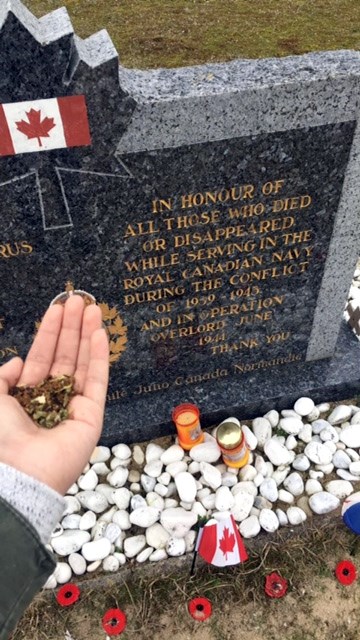THUNDER BAY - James Redsky, a soldier who fought in the First World War, once recalled how the enemy troops kept coming over the trenches and the machine guns glowed red as smoke filled the air.
“When the fighting finished, I went over to the front line to see the damage,” he wrote. “It was an awful mess - Germans and Canadians lay all over, some wounded, some dead. I went back and wrote to Blanche: ‘The boys have gone, but not their sweat and their blood. That will remain forever.’”
Redsky was one of the lucky ones to survive the brutal fighting in Europe and return to his home community of Shoal Lake. One hundred years later, Redsky’s great great granddaughter, Sariane Fiddler, at 16-years-old walked the same battlefields as him, where so many fallen Canadian’s remain to this day.
“When I was younger I was always told to dance during war songs, but I didn’t really know why,” Fiddler said. “I just had a general idea that I did have family members who went to the war. But I didn’t know specifically who went to the war.”
Last March, Fiddler, along with 22 students from Sir Winston Churchill High School, visited several Canadian battlefields in Northern France, including Vimy Ridge, Dieppe, Juno Beach, Passchendaele, and Beaumont-Hamel.
Paul Trevisan, a social science teacher at Churchill, lead the tour and he said speaking about these battles in class or reading about them in textbooks cannot provide the same level of understanding as actually walking the same fields as the soldiers did so long ago.
“Until you actually walk the steps that the soldiers walked, you really don’t appreciate it,” he said. “Seeing how steep the hills actually were and what the ground was actually like, it gives you a totally different perspective when you’re there than actually just seeing it in a textbook.”
The experience was very surreal for the students, who visited war cemeteries and saw the names of the young men, sometimes only a couple years older than they are, who died so young.
“The students were looking around and actually getting it and looking at me and saying: I get it now about the terrain and how rough it was,” he said.
“When you’re there, history comes alive. That’s the only way I can describe it. When you are there, you are actually feeling what they felt. When you are walking through those trenches, it’s hard to describe.”
Leading up to the trip, Fiddler began learning more about three of her relatives who fought in and survived the Great War, including James Redsky’s brother, Edward, as well as David Kejick, who was her grandmother’s sister’s husband’s grandfather.
During his service, Kejick was awarded the Distinguished Conduct Medal for leading a charge against a German machine gun position, capturing 87 prisoners. The armory in Kenora and the school in Shoal Lake have been named after Kejick.
To honour her family members, along with the more than 4,000 Indigenous men and women who served in the First World War and the more than 3,000 who served in the Second World War, Fiddler offered tobacco at several war memorials in France.
“I made that offering to honour them,” Fiddler said. “They are the reason why we live today in peace and freedom.”
And while the battlefields her family members once walked are much different today than they were 100 years ago, with grass growing over the shell craters, trenches long disappeared, and flowers blooming in the fields, it’s still the same ground that holds the sweat and blood of those Redsky wrote about, those who will remain there forever.
“When I went on this trip I didn’t expect to learn so much,” Fiddler said. “But as I started learning more about the war during the trip, it just made me realize that my family members were there. You don’t really wrap your head around that.”
“You just realize it,” she continued. “You just finally come to terms with the fact that this is where they were, this is where they fought.”
